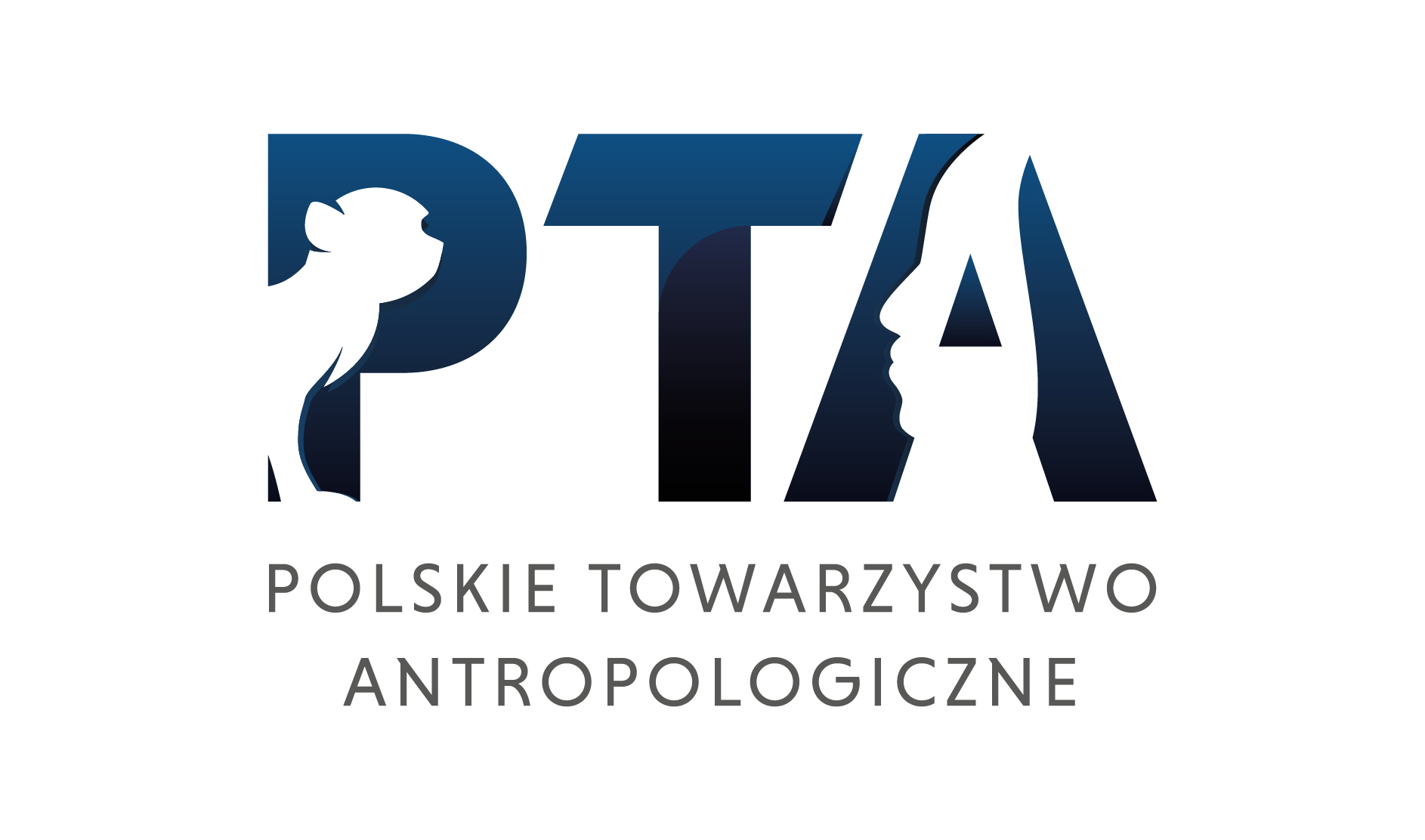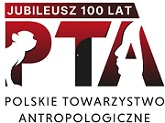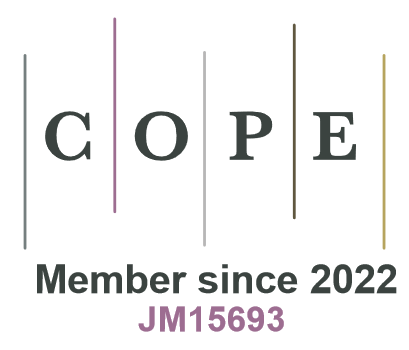Two interpretations of human evolution: Essentialism and Darwinism
DOI:
https://doi.org/10.2478/v10044-008-0016-2Keywords:
hominin, hominid, Australopithecus, brain, statureAbstract
Despite intensive studies of a large number of fossils discovered during the 20th century there is no consensus as to the interpretation of the process of hominin evolution. Some authors see as many as six genera and some 17 species, while others argue for a single lineage from Plio/Pleistocene until today. Such diversity of interpretations of the same facts indicates lack of a uniform theoretical basis underlying studies of human evolution. Debates can be resolved using basic principles of scientific inquiry - parsimony and falsification of null hypotheses. Hypothesis testing is now possible with respect to the evolution of basic hominin characteristics such as brain size, body size and the size of the dentition that have sample sizes of a few hundred individual data points each. These characters display a continuous change with time. Analyses of variance do not falsify the null hypothesis of the existence of only one species at any time - variances around regression lines on time do not differ from the variance observed in the single species of Homo sapiens - distributions of residuals are normal. Thus, splitting of the hominin lineage into coeval species can only be based on descriptive characteristics that are liable to errors of subjective judgment.
Downloads
References
Ackermann R. R., J. Rogers, J. M. Cheverud, 2006, Identifying the morphological signatures of hybridization in primate and human evolution, J. Hum. Evol., 51, 632-45
View in Google Scholar
Albrecht G. H., J. M. Miller, 1993, Geographic variation in Primates: A review with implications for interpreting fossils, [in:] Species, Species Concepts, and Primate Evolution, W. H. Kimbel & L. Martin (eds.), Plenum Press, New York, pp. 123-61
View in Google Scholar
Bielicki T., 1969, Niektóre związki zwrotne w procesie ewolucji Hominidae, Mat. i Prace Antrop., 77, 3-60
View in Google Scholar
Brace C. L., 1967, The Stages of Human Evolution, Prentice-Hall, Englewood Cliffs, NJ
View in Google Scholar
Brace C. L., 1981, Tales of the phylogenetic woods: The evolution and significance of evolution trees, Am. J. of Phys. Anthropol., 56, 411-29
View in Google Scholar
Brace C. L., 1995, Trends in the evolution of human tooth size, [in:] Aspects of Dental Biology: Palaeontology, Anthropology, and Evolution, J. Moggi-Cecchi (ed.), Int. Inst. for the Study of Man, Florence, pp. 437-46
View in Google Scholar
Brace C. L., P. E. Mahler, 1971, Post-Pleistocene changes in the human dentition, Am. J. Phys. Anthropol., 34, 191-204
View in Google Scholar
Brace C. L., S. L. Smith, K. D. Hunt, 1991, What big teeth you had grandma! Human tooth size, past and present, [in:] Advances in Dental Anthropology, M. A. Kelley & C. S. Larsen (eds.), Wiley-Liss, New York, pp. 33-57
View in Google Scholar
Brown P., T. Sutkina, M. J. Morwood, R. P. Soejono, E. Jatmiko, et al., 2004, A new smallbodied hominin from the Late Pleistocene of Flores, Indonesia, Nature, 431, 1055-61
View in Google Scholar
Brumm A., F. Aziz, G. D. van den Burgh, M. J. Morwood, M. W. Moore, et al., 2006, Early stone technology on Flores and its implications for Homo floresiensis, Nature, 441, 624-28
View in Google Scholar
Calcagno J., 1989, Mechanisms of Human Dental Reduction, A Case Study from Post- Pleistocene Nubia, Univ. of Kansas Publ. in Anthropology, 18, Lawrence, Kansas
View in Google Scholar
Conroy G. C., 2002, Speciosity in the early Homo lineage: Too many, too few, or just about right?J. Hum. Evol., 43, 759-66
View in Google Scholar
Carruthers P., A. Chamberlain (eds.), 2000, Evolution and the human mind, Cambridge Univ. Press, Cambridge
View in Google Scholar
Cela-Conde C. J., F. J. Ayala, 2007, Human evolution. Trails from the past, Oxford Univ. Press, Oxford
View in Google Scholar
Cope D. A., M. G. Lacy, 1992, Falsification of a single species hypothesis using the coefficient of variation: A simulation approach, Am. J. Phys. Anthropol., 89, 359-78
View in Google Scholar
Cope, D. A., M. G. Lacy, 1996, The CV as a tool for assessing the taxonomic composition of fossil sample, Am. J. Phys. Anthropol., Suppl. 22, 89
View in Google Scholar
Darwin C., 1859 [1952], The origin of species by means of natural selection, Encyclopaedia Britannica, Chicago
View in Google Scholar
Delson E., I. Tattersall, J. A. van Couvering, A. S. Brooks, 2000, Brief introduction to human evolution and prehistory, [in:] Encyclopedia of Human Evolution and Prehistory, 2nd ed., E. Delson, I. Tattersall, J. A. Couvering, A. S. Brooks (eds.), Garland Publishing, New York, pp. xvii-xxii
View in Google Scholar
De Miguel C., M. Henneberg, 1999, Variation in hominid body size estimates: Do we know how big our ancestors were?, Persp. Hum. Biol., 4(1), 65-80
View in Google Scholar
De Miguel C., M. Henneberg, 2001, Variation in hominid brain size: How much is due to method?, Homo, 52, 2-56
View in Google Scholar
De Queiroz K., M. J. Donoghue, 1988, Phylogenetic systematics and the species problem, Cladistics, 6, 61-75
View in Google Scholar
Eckhardt R. B., 2000, Human paleobiology, Cambridge Univ. Press, Cambridge
View in Google Scholar
Eldredge N., S. J. Gould, 1972, Speciation and punctuated equilibria: An alternative to phyletic gradualism, [in:] Models in paleobiology, T. Schopf (ed.), Freeman Cooper, San Francisco, pp. 85-120
View in Google Scholar
Eldredge N., J. Cracraft, 1980, Phylogenetic Patterns and the Evolutionary Process, Columbia Univ. Press, New York
View in Google Scholar
Frayer D., 1978, The Evolution of the Dentition in Upper Paleolithic and Mesolithic Europe, Univ. of Kansas Publ. in Anthropology, 10, Lawrence, Kansas
View in Google Scholar
Frisancho A. R., 1990, Anthropometric standards for the assessment of growth and nutritional status, Univ. of Michigan Press, Ann Arbor
View in Google Scholar
Genesis, 1611, The Holy Bible, Robert Barker, London
View in Google Scholar
Gonzalez-Forero M., 2009, Removing ambiguity from the biological species concept, J. Theor. Biol., 256, 76-80
View in Google Scholar
Henneberg M., 1988, Decrease of human skull size in the Holocene, Hum. Biol., 60, 395-405
View in Google Scholar
Henneberg M., 1990, Brain size/body weight variability in Homo sapiens: Consequences for interpreting hominid evolution, Homo, 39, 121-30
View in Google Scholar
Henneberg M., 1997, The problem of species in hominid evolution, Persp. Hum. Biol., 3, 21-31
View in Google Scholar
Henneberg M., 1998, Evolution of the human brain: Is bigger better?, Experim. Clin. Physiol. Pharmacol., 25, 745-49
View in Google Scholar
Henneberg M., 2001, The gradual eurytopic evolution of humans: Not from Africa alone, [in:] Man: Past, present, and future, E. Indriati (ed.), Bigraf Publishing, Yogyakarta, Indonesia, pp. 42-52
View in Google Scholar
Henneberg M., 2006, The rate of human morphological microevolution and taxonomic diversity of hominids, Studies in Historical Anthropology, 4 [2004], 49-59
View in Google Scholar
Henneberg M., 2007, The mode and rate of human evolution and the recent Liang Bua finds, [in:] Recent advances of Southeast Asia paleoanthropology and archaeology, E. Indriati (ed.), Gadjah Mada University, Yogyakarta, pp. 24-29
View in Google Scholar
Henneberg M., 2008, Darwinian interpretation of human evolution based on the evolution of body size and brain size, [in:] Ksiega jubileuszowa, stulecie Zakladu Antropologii Uniwersytetu Jagiellonskiego 1908-2008, K. Kaczanowski (ed.), Plus Publishers, Kraków, pp. 71-85
View in Google Scholar
Henneberg M., G. Brush, 1994, Similum, a concept of flexible synchronous classification replacing rigid species in evolutionary thinking, Evol. Theor., 10, 278
View in Google Scholar
Henneberg M., A. Budnik, M. Pezacka, A. E. Puch, 1985, Head size body size and intelligence intraspecific correlation in Homo sapiens species, Homo, 36, 207-18
View in Google Scholar
Henneberg M., C. de Miguel, 2004, Hominins are a single lineage: Brain and body size variability does not reflect postulated taxonomic diversity of hominins, Homo, 55, 21-37
View in Google Scholar
Henneberg M., J. Schofield, 2008, The Hobbit Trap, Wakefield Press, Adelaide
View in Google Scholar
Henneberg M., J. F. Thackeray, 1995, A singlelineage hypothesis of hominid evolution, Evol. Theor., 13, 31-38
View in Google Scholar
Henneberg M., A. Thorne, 2004, Flores human may be pathological Homo sapiens, Before Farming, 4, 2-4
View in Google Scholar
Hennig W., 1966, Phylogenetic Systematics, Univ. of Illinois Press, Illinois
View in Google Scholar
Henry A. G., B. Wood, 2007, Whose diet? An introduction to the hominin fossil record, [in:] Evolution of the human diet, P. S. Ungar (ed.), Oxford Univ. Press, Oxford, pp. 11-28
View in Google Scholar
Hershkovitz I., L. Kornreich, Z. Laron, 2007, Comparative skeletal features between Homo floresiensis and patients with primary growth hormone insensitivity (Laron Syndrome), Am. J. Phys. Anthropol., 134, 198-208
View in Google Scholar
Holliday T. W., 2003, Species concepts, reticulation, and human evolution, Curr. Anthropol., 44, 653-60
View in Google Scholar
Hunt K. D., 2003, The single species hypothesis: Truly dead and pushing up bushes, or still twitching and ripe for resuscitation?, Hum. Biol., 75, 485-502
View in Google Scholar
Jacob T., E. Indriati, R. P. Soejono, K. Hsü, D. Frayer, et al., 2006, Pygmoid Australomelanesian Homo sapiens skeletal remains from Liang Bua, Flores: Population affinities and pathological abnormalities, Proc. Natl. Acad. Sci., 103, 13421-26
View in Google Scholar
Jolly C. J., 1993, Species, subspecies, and baboon systematics, [in:] W. H. Kimbel & L. Martin (eds.), Species, Species Concepts, and Primate Evolution, Plenum Press, New York, pp. 67-107
View in Google Scholar
Jolly C. J., 2001, A proper study for mankind analogies from the papionin monkeys and their implications for human evolution, Yearb. Phys. Anthropol., 44, 177-204
View in Google Scholar
Jolly C. J., T. Woolley-Barker, S. Beyene, T. Distotell, J. Phillips-Conroy, 1997, Intergeneric hybrid baboons, Int. J. Primatol., 18, 597-628
View in Google Scholar
Jones S., R. D. Martin, D. R. Pilbeam, 2000, The Cambridge Encyclopedia of Human Evolution, Cambridge Univ. Press, Cambridge
View in Google Scholar
Kelley J., 1993, Taxonomic implications of sexual dimorphism in Lufengpithecus, [in:] Species, species concepts, and primate evolution, W. H. Kimbel & L. B. Martin (eds.), Plenum Press, New York, pp. 429-58
View in Google Scholar
Kimbel W., Y. Rak, 1993, The importance of species taxa in paleoanthropology and an argument for the phylogenetic concept of the species category, [in:] Species, species concepts, and primate evolution, W. H. Kimbel & L. B. Martin (eds.), Plenum Press, New York, pp. 461-84
View in Google Scholar
Lacruz R. S., F. R. Rozzib, T. G. Bromage, 2005, Dental enamel hypoplasia, age at death, and weaning in the Taung child, S. Afr. J. Sci., 101, 567-69
View in Google Scholar
Larsen C. S., 2008, Our Origins: Discovering Physical Anthropology, W. W. Norton, New York
View in Google Scholar
Lee M. S. Y., 2003, Species concepts and species reality: Salvaging a Linnean rank, J. Evol. Biol., 16, 179-88
View in Google Scholar
Lieberman D. E., D. R. Pilbeam, B. A. Wood, 1996, Homoplasy and early Homo: An analysis of the evolutionary relationship of H. habilis sensu stricto and H. rudolfensis, J. Hum. Evol., 30, 97-120
View in Google Scholar
Linnaeus C., 1758, Systema Naturae, Editio decimal, Laur Salvius, Holmiae
View in Google Scholar
Manning A., M. S. Dawkins, 1998, An introduction to animal behaviour, 5th ed., Cambridge Univ. Press, Cambridge
View in Google Scholar
Martin R. D., 2007, Problems with the tiny brain of the Flores hominid, [in:] Recent advances of Southeast Asia paleoanthropology and archaeology, E. Indriati (ed.), Gadjah Mada University, Yogyakarta, pp. 9-23
View in Google Scholar
Martin R. D., A. M. MacLarnon, J. L. Phillips, L. Dussubieux, P. R. Williams, W. B. Dobyns, 2006a, Comment on "The brain of LB1, Homo floresiensis", Science, 312, 999
View in Google Scholar
Martin R. D., A. M. MacLarnon, J. L. Phillips, W. B. Dobyns, 2006b, Flores hominid: New species or microcephalic dwarf?, Anat. Rec., 288A, 1123-45
View in Google Scholar
Mayr E., 1969, Principles of systematic zoology, McGraw-Hill, New York
View in Google Scholar
Mayr E., 1995, Species, classification, and evolution, [in:] Biodiversity and Evolution. R. Arai, M. Kato, Y. Doi, (eds.), National Science Museum Foundation, Tokyo, pp. 3-12
View in Google Scholar
Mathers K., M. Henneberg, 1995, Were we ever that big? Gradual increase in hominid body size over time, Homo, 46, 141-73
View in Google Scholar
Mayden R. L., 1997, A hierarchy of species concepts: the denouement in the saga of the species problem, [in:] Species, the Units of Biodiversity, M. F. Claridge, H. A. Dawah, M. R. Wilson (eds). Chapman and Hall, London, pp. 381-424
View in Google Scholar
Meikle W. E., S. T. Parker, 1994, Naming our ancestors. An anthology of hominid Taxonomy, Waveland Press, Prospect Heights, Ill.
View in Google Scholar
Mishler B. D., M. J. Donoghue, 1982, Species concepts: a case for pluralism, Syst. Zool., 31, 491-503
View in Google Scholar
Mishler B. D., R. N. Brandon, 1987, Individuality, pluralism, and the phylogenetic species concept, Biol. & Philos., 2, 397-414
View in Google Scholar
Mishler B. D., E. C. Theriot, 2000, The phylogenetic species (sensu Mishler and Theriot): Monophyly, apomorphy, and phylogenetic species concepts, [in:] Species concepts and phylogenetic theory: A debate, Q. D. Wheeler & R. Meier (eds.), Columbia Univ., pp. 44-54
View in Google Scholar
Morwood M. J., R. P. Soejono, R. G. Roberts, T. Sutikna, C. S. M. Turney, et al., 2004, Archaeology and age of a new hominin from Flores in eastern Indonesia, Nature, 431, 1087-91
View in Google Scholar
Nelson G. J., N. I. Platnick, 1981, Systematics and biogeography: Cladistics and vicariance, Columbia Univ. Press, New York
View in Google Scholar
Nixon, K. C., Q. D. Wheeler, 1990, An amplification of the phylogenetic species concept, Cladistics, 6, 211-23
View in Google Scholar
Obendorf P., C. E. Oxnard, B. J. Kefford, 2008, Are the small human-like fossils found on Flores human endemic cretins?, Proc. R. Soc. B, 275, 1287-96
View in Google Scholar
Platnick N. I., 1977a, Cladogram, phylogenetic trees, and hypothesis testing, Syst. Zool., 26, 438-42
View in Google Scholar
Platnick N. I., 1977b, Monophyly and the origin of higher taxa: A reply to E. O. Wiley, Syst. Zool., 26, 355-57
View in Google Scholar
Plavcan J. M., 1993, Catarrhine dental variability and species recognition in the fossil record, [in:] Species, species concepts, and primate evolution, W. H. Kimbel & L. B. Martin (eds.), Plenum Press, New York, pp. 239-93
View in Google Scholar
Plavcan J. M., D. A. Cope, 2001, Metric variation and species recognition in the fossil record, Evol. Anthropol., 10, 204-22
View in Google Scholar
Quintyn C., 2009, The naming of new species in hominin evolution: A radical proposal - a temporary cessation in assigning new names, Homo, 60, 307-41
View in Google Scholar
Rose K. D., T. Bown, 1993, Species concepts and species recognition in Eocene primates, [in:] Species, species concepts, and primate evolution, W. H. Kimbel & L. B. Martin (eds.), Plenum Press, New York, pp. 299-330
View in Google Scholar
Samadi S., Barberouse A., 2009, Species: Towards new, well-grounded practices, Biol. J. Linn. Soc., 97, 217-22
View in Google Scholar
Staley J. T., 2009, Universal species concept: Pipe dream or a step toward unifying biology?, J. Ind. Microbiol. Biotechnol., 36, 1331-36
View in Google Scholar
Stanford C., J. S. Allen, C. S. Antón, 2009, Biological Anthropology, Pearson Education, Upper Saddle River, NJ
View in Google Scholar
Strzałko J., M. Henneberg, 1982, Hominization as a necessary effect of evolution of a nongenetic mode of hereditary transmission, [in:] Evolution and environment, V. Novak, J. Milkovsky (eds.), CSAV Press, Prague, pp. 367-76
View in Google Scholar
Strzałko J., M. Henneberg, 1982, Hominization as a necessary effect of evolution of a nongenetic mode of hereditary transmission, [in:] Evolution and environment, V. Novak, J. Milkovsky (eds.), CSAV Press, Prague, pp. 367-76
View in Google Scholar
Tattersall I., E. Delson, J. A. van Couvering (eds.), 1988, Encyclopedia of Human Evolution and Prehistory, Garland Publishing, New York
View in Google Scholar
Tobias P. V., 1988, Tooth material in the hominidae, J. Dent. Assoc. S. Afr., 43, 557-60
View in Google Scholar
Velasco J. D. 2009, When monophyly is not enough: Exclusivity as the key to defining a phylogenetic species concept, Biol. Philos., 24, 473-86
View in Google Scholar
Walker A., R. E. Leakey, 1993, The Nariokotome Homo erectus skeleton, Springer, New York
View in Google Scholar
Weber J., A. Czarnetski, C. M. Pusch, 2005, Comment on "The brain of LB1, Homo floresiensis", Science, 310, 236
View in Google Scholar
White T. D., B. Asfaw, Y. Beyene, J. Haile- Selassie, C. O. Lovejoy, et al., 2009, Ardipithecus ramidus and the paleobiology of early hominins, Science, 326, 64
View in Google Scholar
Wolpoff M. H., 1968, "Telanthropus" and the single species hypothesis, Am. Anthrop., 72, 447-93
View in Google Scholar
Wolpoff M. H., 1971, Competitive exlusion among Lower Pleistocene hominids: The single species hypothesis, Man, 6, 601-14
View in Google Scholar
Wood B., B. G. Richmond, 2000, Human evolution: taxonomy and paleobiology, J. Anat., 197, 19-60
View in Google Scholar
Downloads
Published
How to Cite
Issue
Section
License

This work is licensed under a Creative Commons Attribution-NonCommercial-NoDerivatives 4.0 International License.








